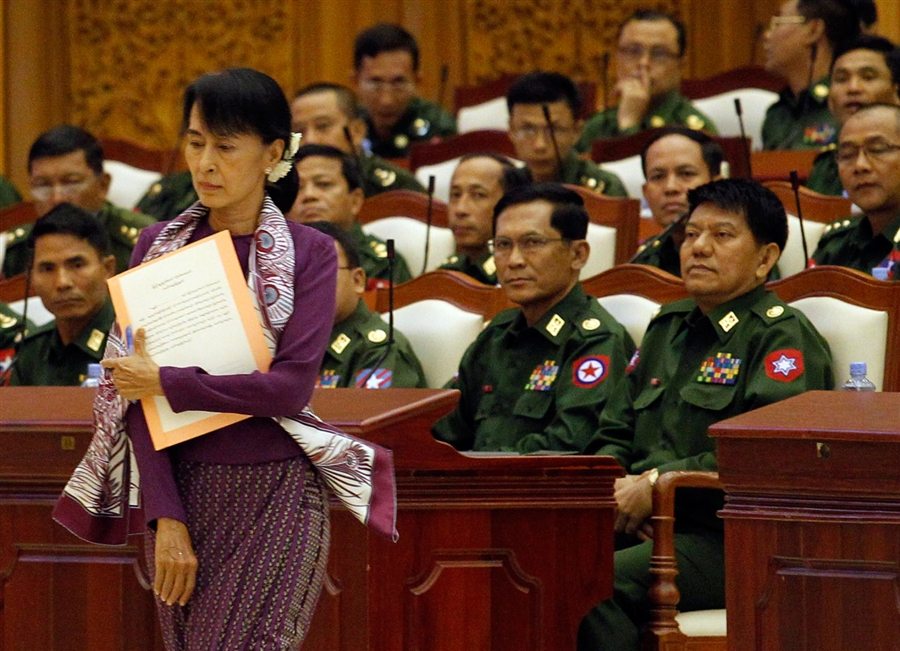
Tensions between China and Japan have reached new heights this month when China announced the extension of its Air Defense Identification Zone (ADIZ) over parts of the territorially contested East China Sea. In response to this challenge to the “freedom of over flight and other internationally lawful uses of sea”, the United States has responded with intentional intrusions of its own in the area. Japan has criticized China for escalating the situation, and another regional power, South Korea, expanded its own ADIZ on Sunday. China’s new ADIZ unquestionably represents an escalation in Sino-Japanese tensions. In fact, their escalating rivalry has destabilized the region and the threat of armed conflict is increasingly credible.
Air Defense Identification Zones are commonplace throughout the world. Aircrafts that fly through an established ADIZ are required to identify themselves and inform relevant authorities of their intended flight path. Coastal countries such as Canada and the US have ADIZs that extend a few hundred kilometers off each coast. These air defense zones are a vital component of national security plans because they provide armed forces with the time to respond to unidentified aircrafts before they reach coastal cities. As a result, these zones pose a challenge to terrorists, smugglers and drug dealers to enter a country.
China’s new air defense zone is controversial because it is perceived as a means of reinforcing Chinese control over the Senkaku/Diaoyu Islands and the South East Pacific. China and Japan have been vying for sovereignty over the islands since 2010. Control of the islands will give territorial jurisdiction over the surrounding waters that contain an abundance of natural resources such as oil, gas, and fertile fishing grounds. Many experts believe that China’s recent expansion of its air defense zone is part of its strategy to reinforce its claim to these resources. In fact, China’s new air defense boundaries overlap those of Japan’s, established in 1968, and are therefore seen as a deliberate challenge to Japanese sovereignty over its territorial waters. China’s new air defense zone and unilateral behavior has also incensed South Korea because the new boundaries overlap a Korean reef and ocean research station.
It is clear that there is little support for China’s air defense zone from the international community. Countries including Japan, South Korea and the US have protested these claims by sending aircraft through the zone without informing China. Major Japanese commercial airlines such as All Nipon Airways and Japan Airlines have abided by a government request and publicly refused to submit flight paths to China. South Korea sent an aircraft to fly through the zone on November 28th and the US government later flew two B-52 bombers through the zone. While the Taiwanese and Australian government promised to obey the new boundaries, they expressed dissatisfaction in official statements.
Some experts believe that the expanded air defense zone is a reflection of Chinese President Xi Jinping’s efforts to consolidate power. By acting aggressively and demonstrating a willingness to involve the Chinese military, he is sending a message to foreigners as well as Chinese nationalists. China is well aware that Japan’s influence in the region is largely dependent on the US’s willingness to support its ally. China took advantage of the 2008 financial crisis and acted aggressively, sending ships to disputed reefs and harassing American naval ships in the South China Sea. Obama’s focus on the US economy throughout his tenure created a perception that US would be unwilling to interfere in foreign affairs. Indeed, the United States has promised to remain neutral in the dispute over the Diaoyu/Senkaku Islands. Strong condemnation of China’s air defense zone and aggressive military response from the United States can be interpreted as an attempt to warn China against unilateral aggression.
Some suggest that US Vice President Joe Biden’s recent visit to Southeast Asia has given credence to China’s recent behavior. However, even if China and Japan are able to resolve the controversy over the air defense zone and the dispute over the Diaoyu/Senkaku Islands, a more significant threat exists to stability in the region. Southeast Asia has never had a strong Japan and strong China at the same time. Therefore, building trust and stability in the region is a difficult endeavor which will take time and patience.




